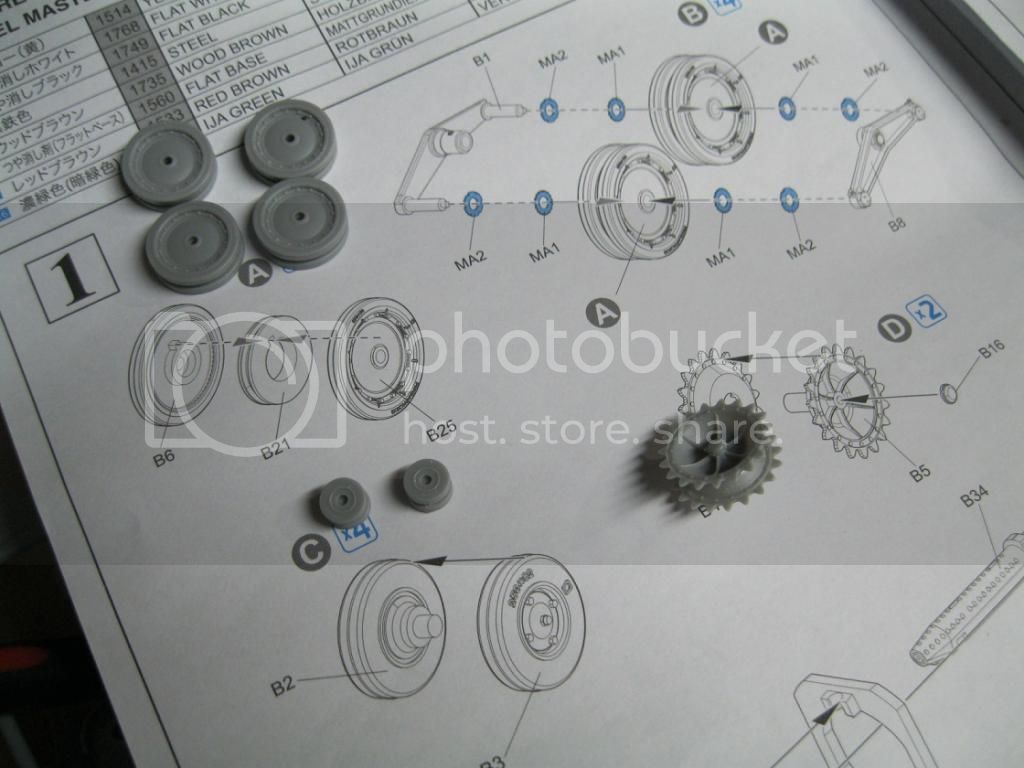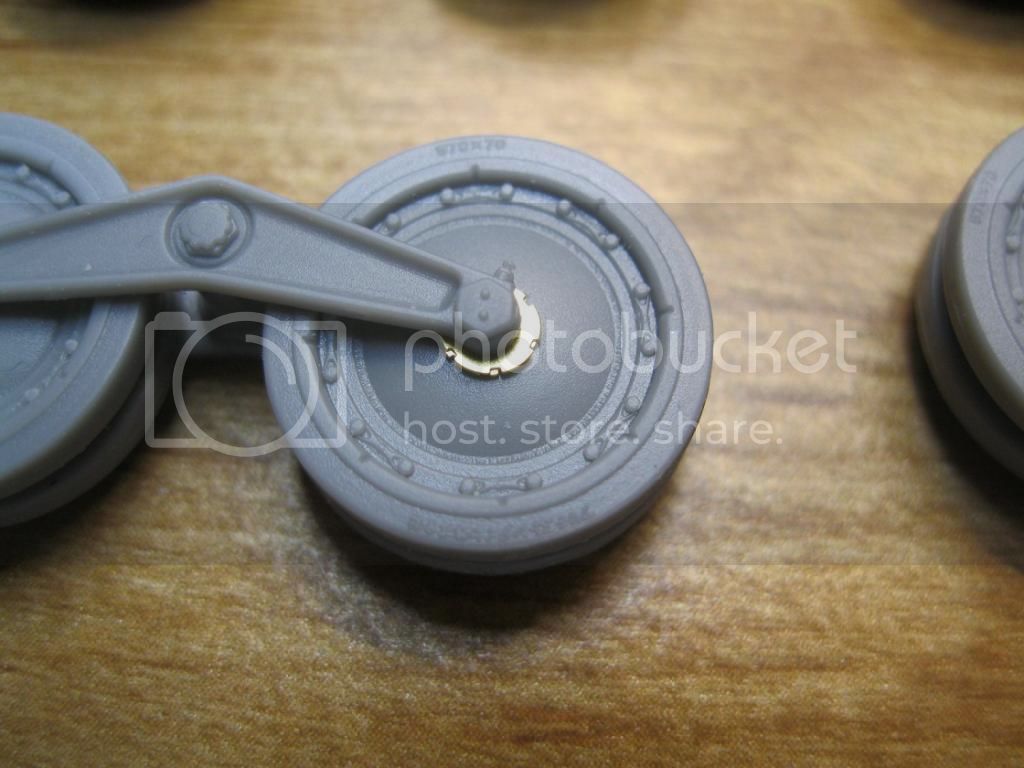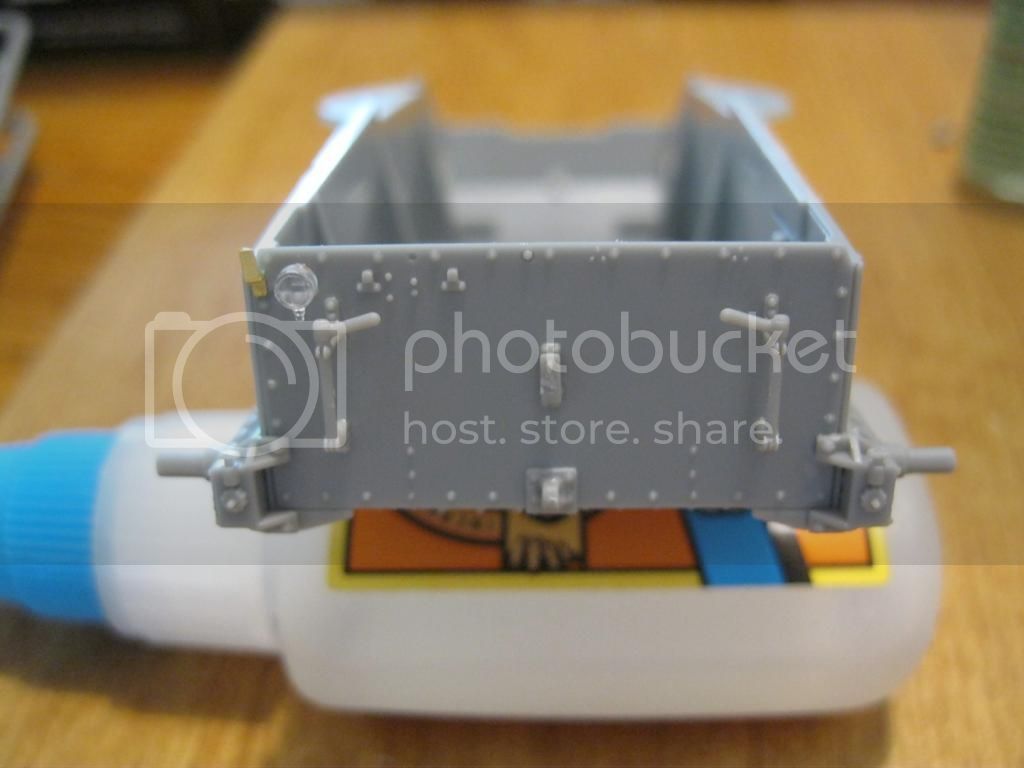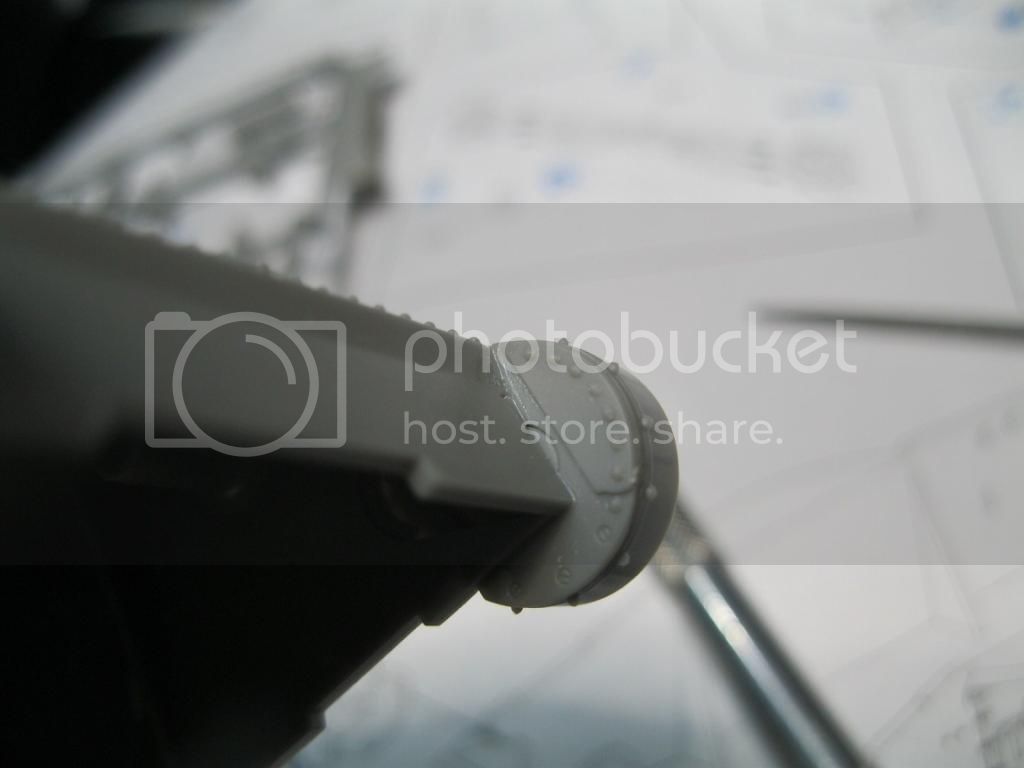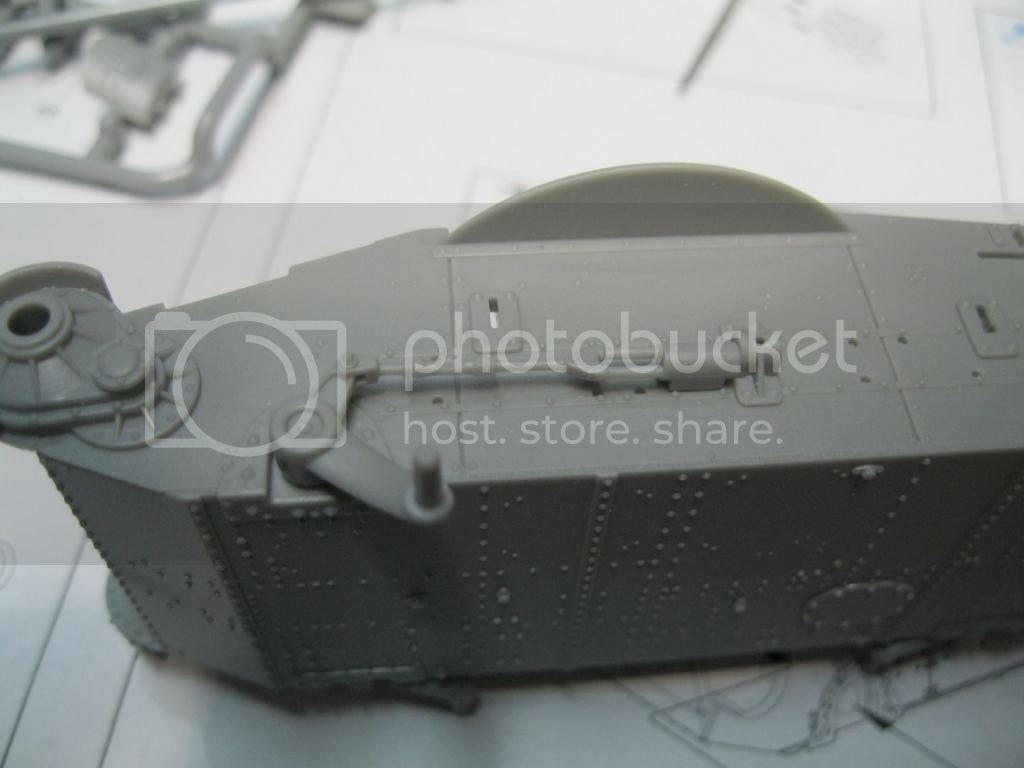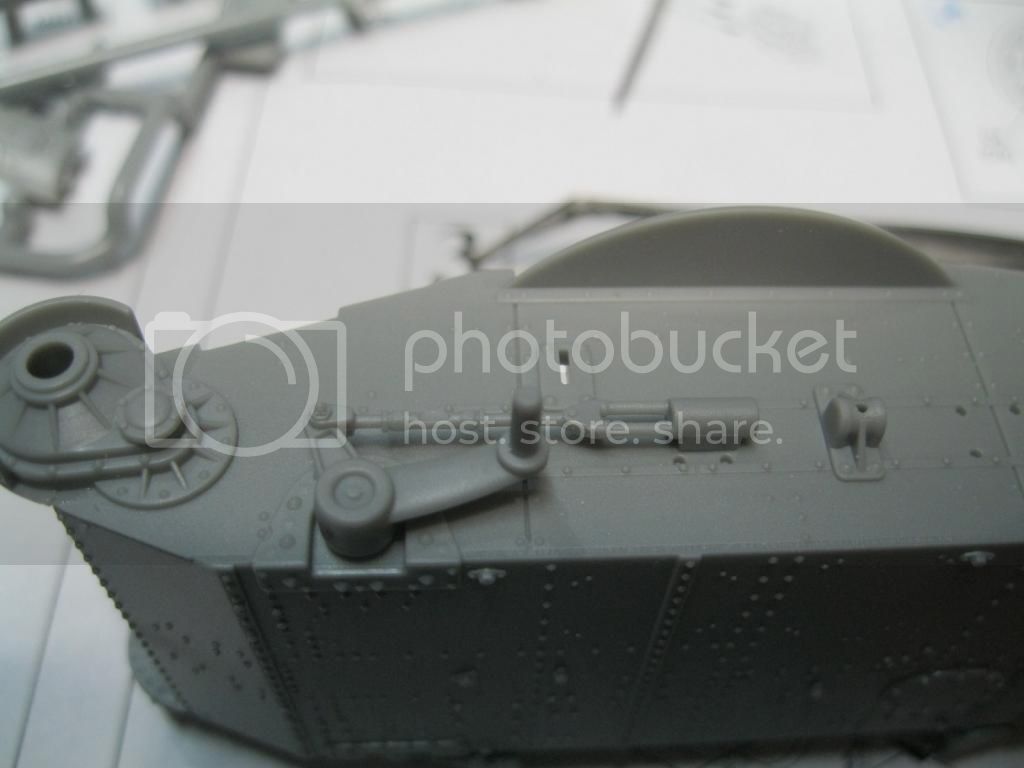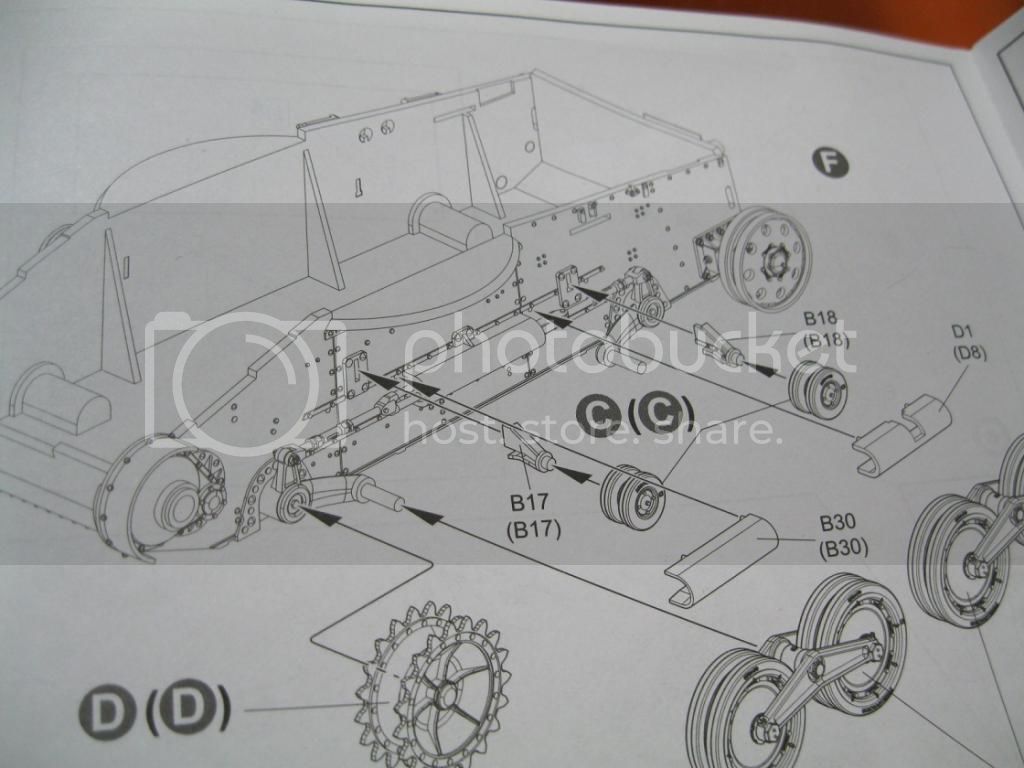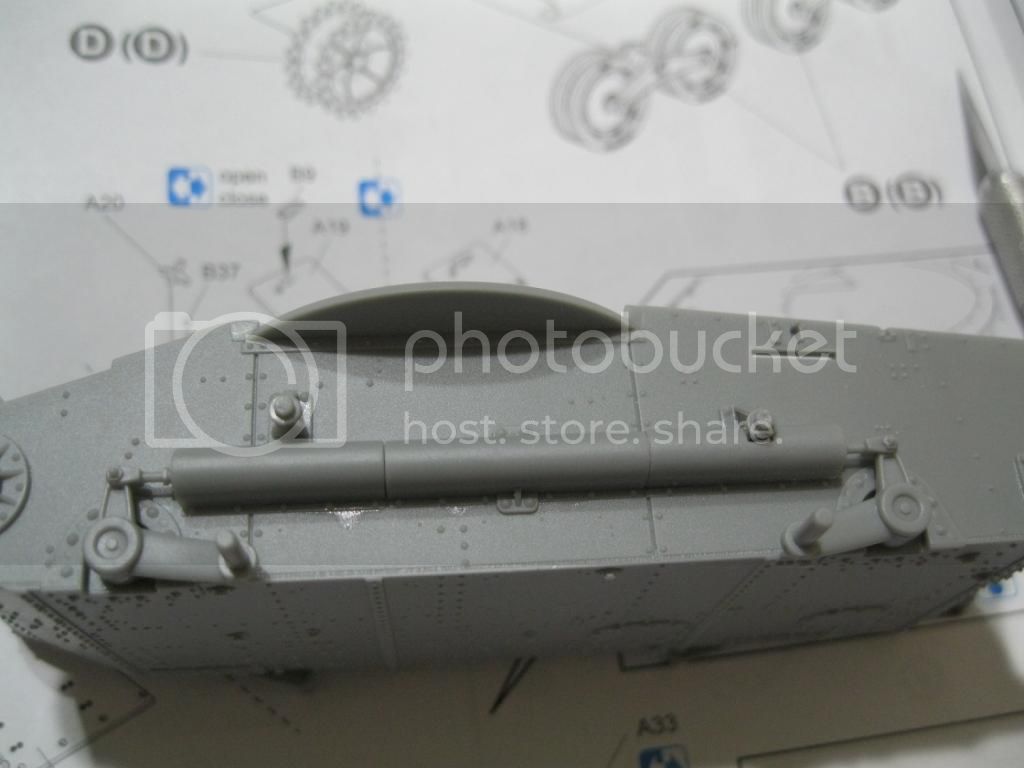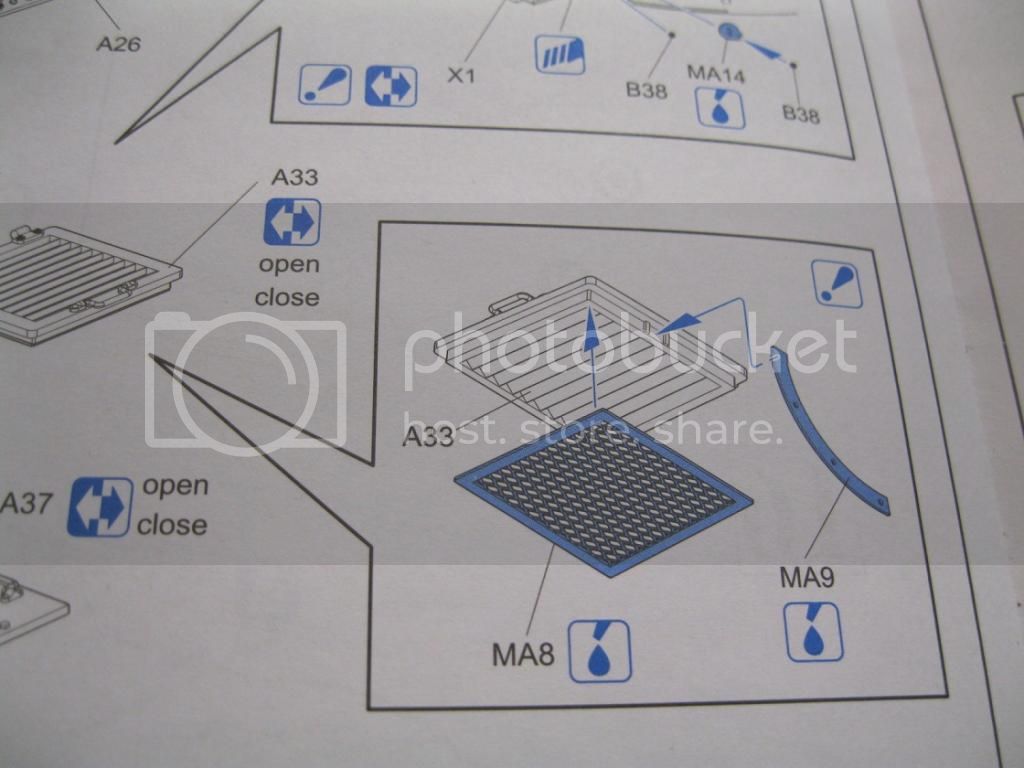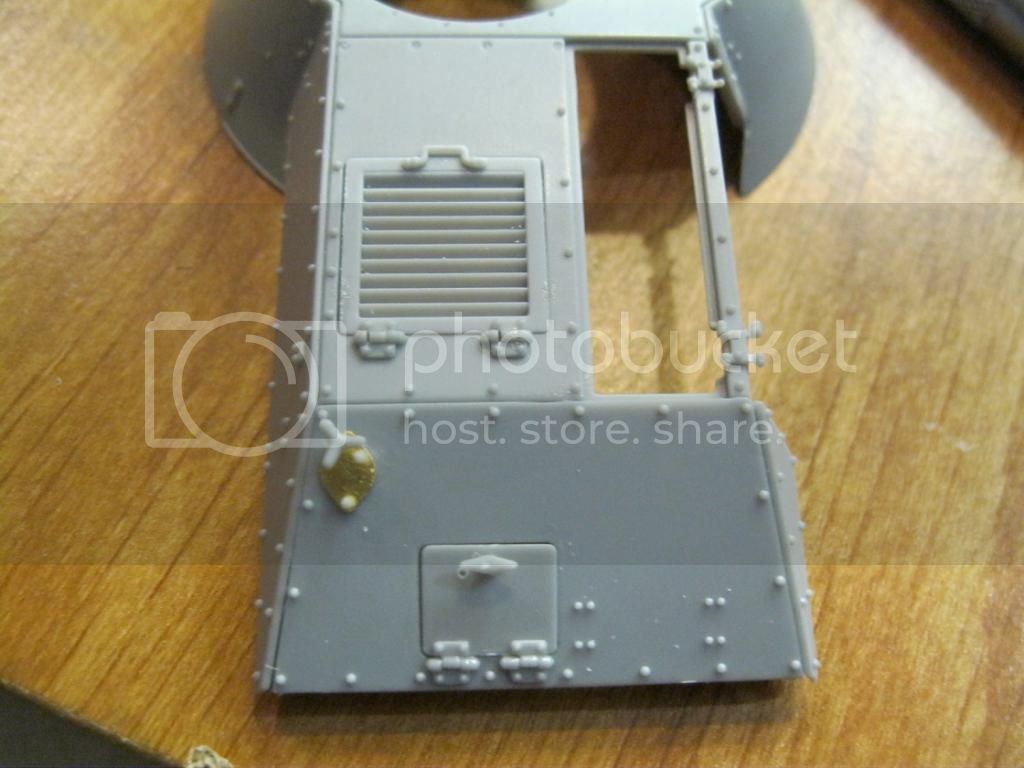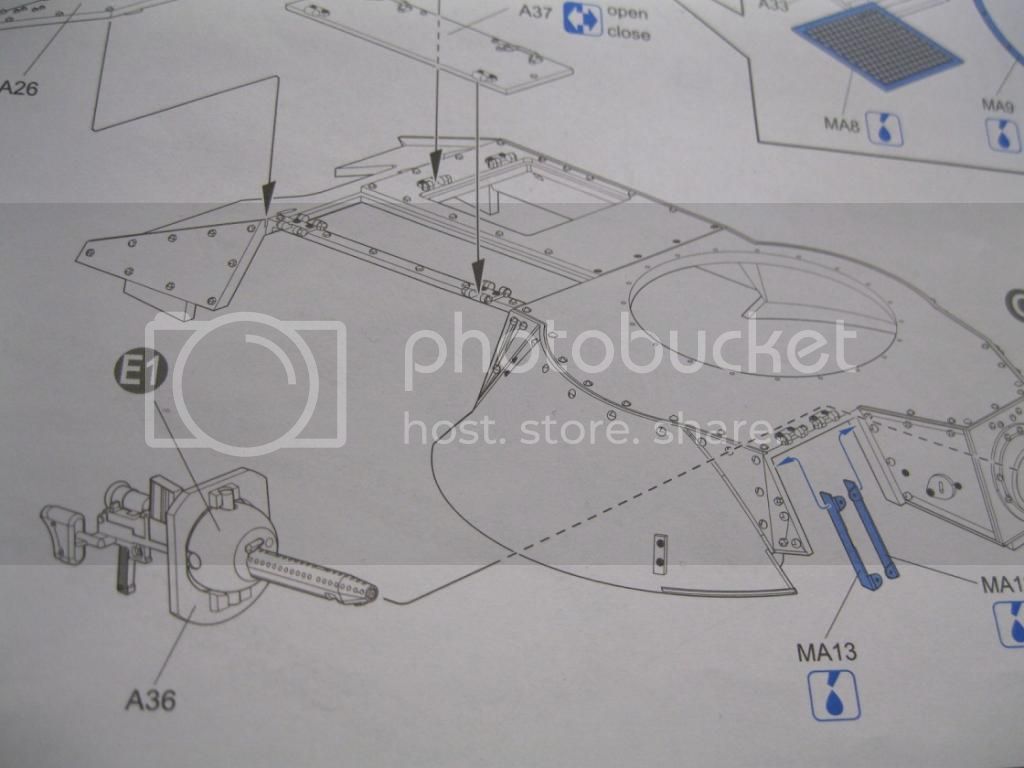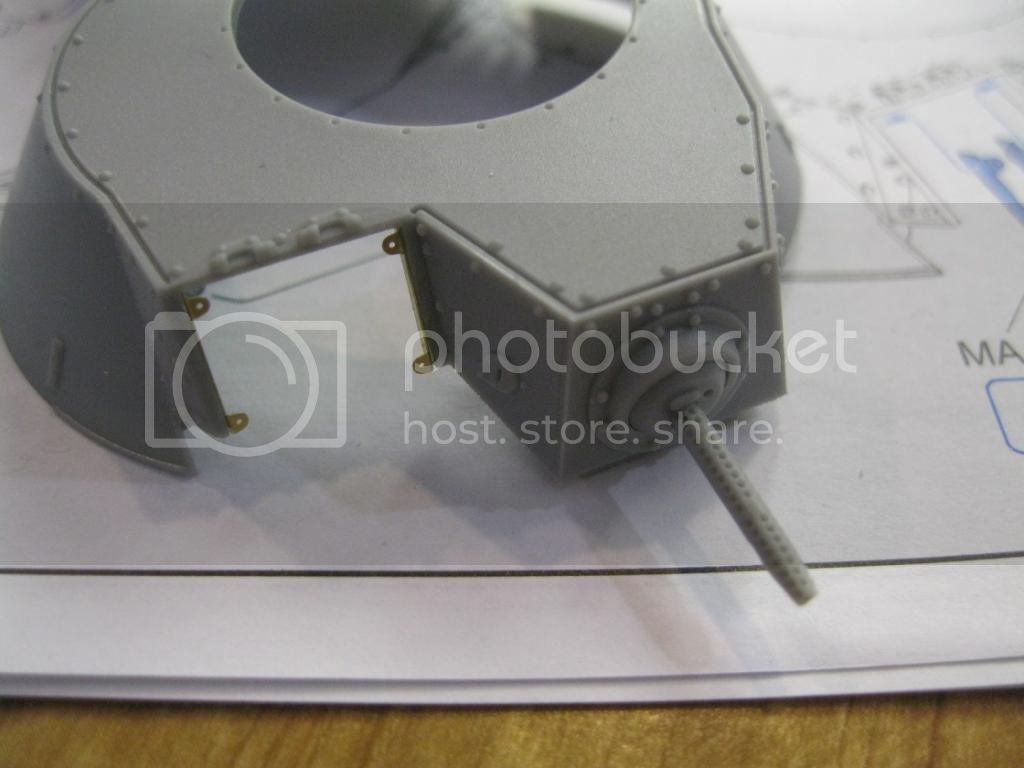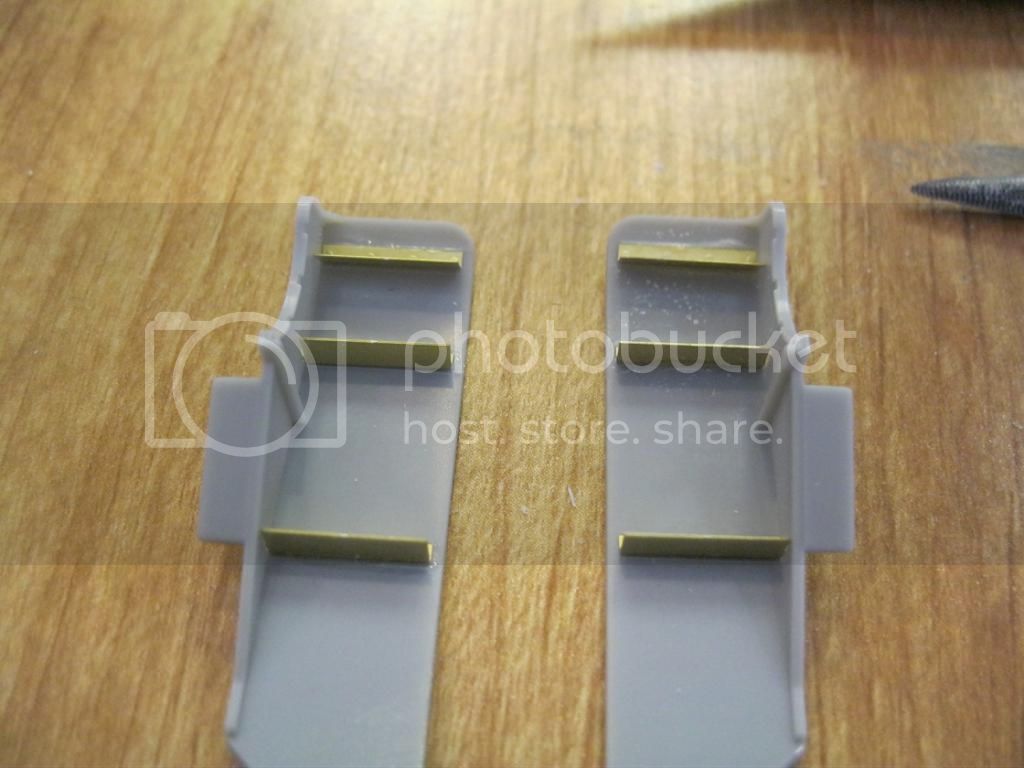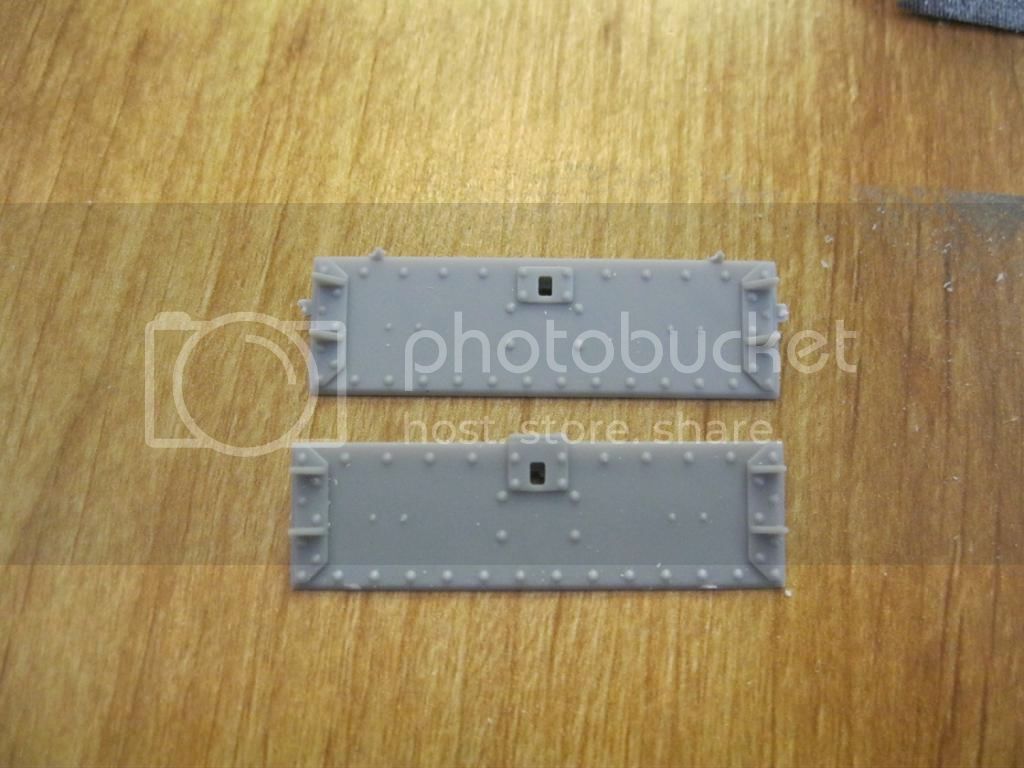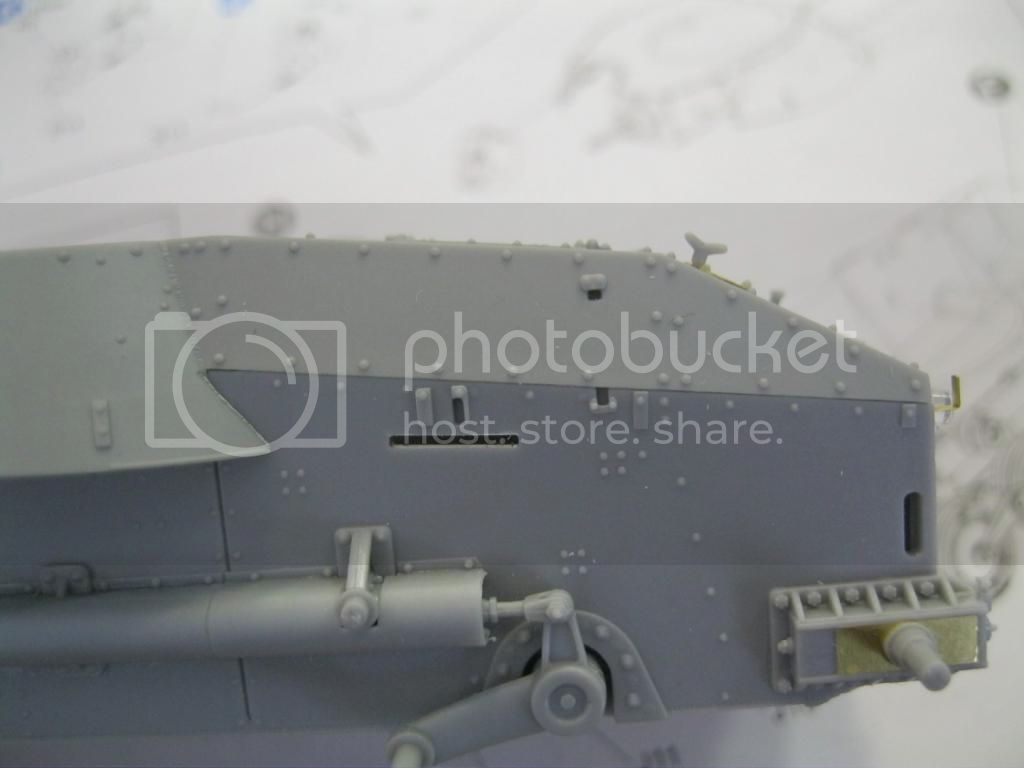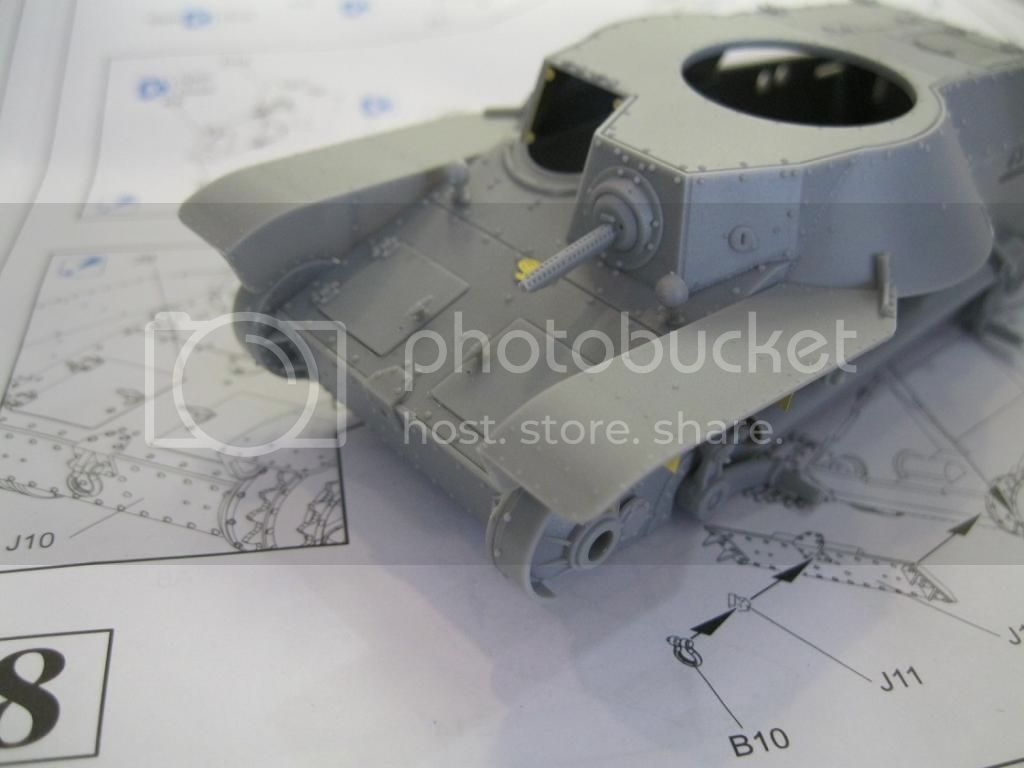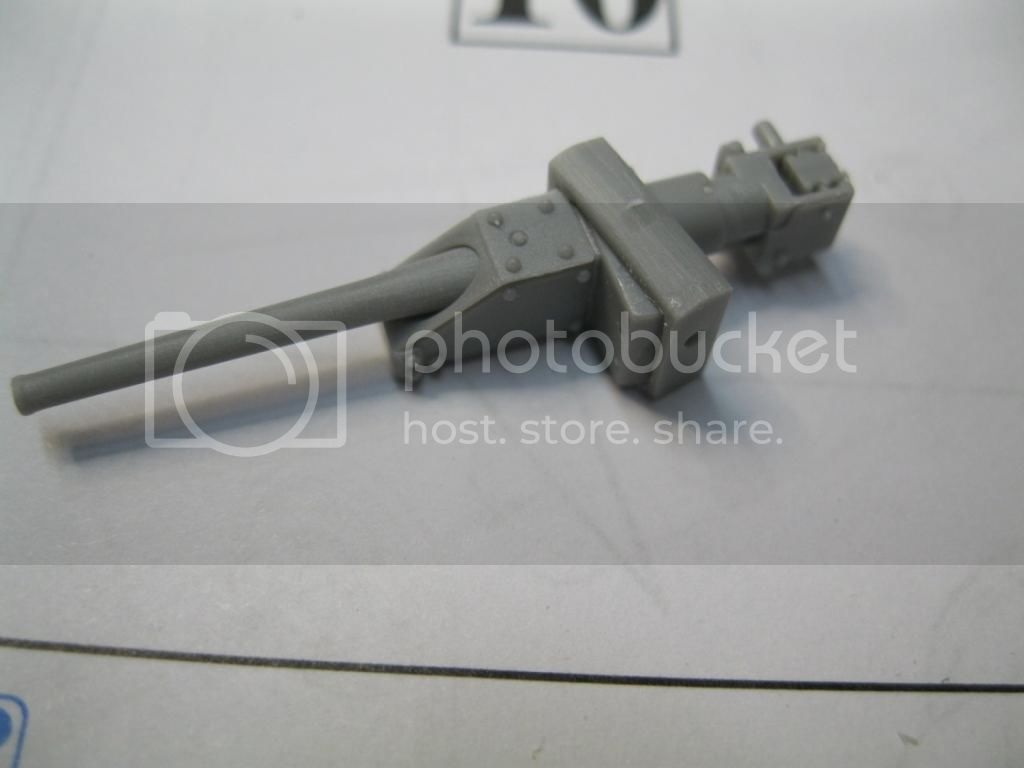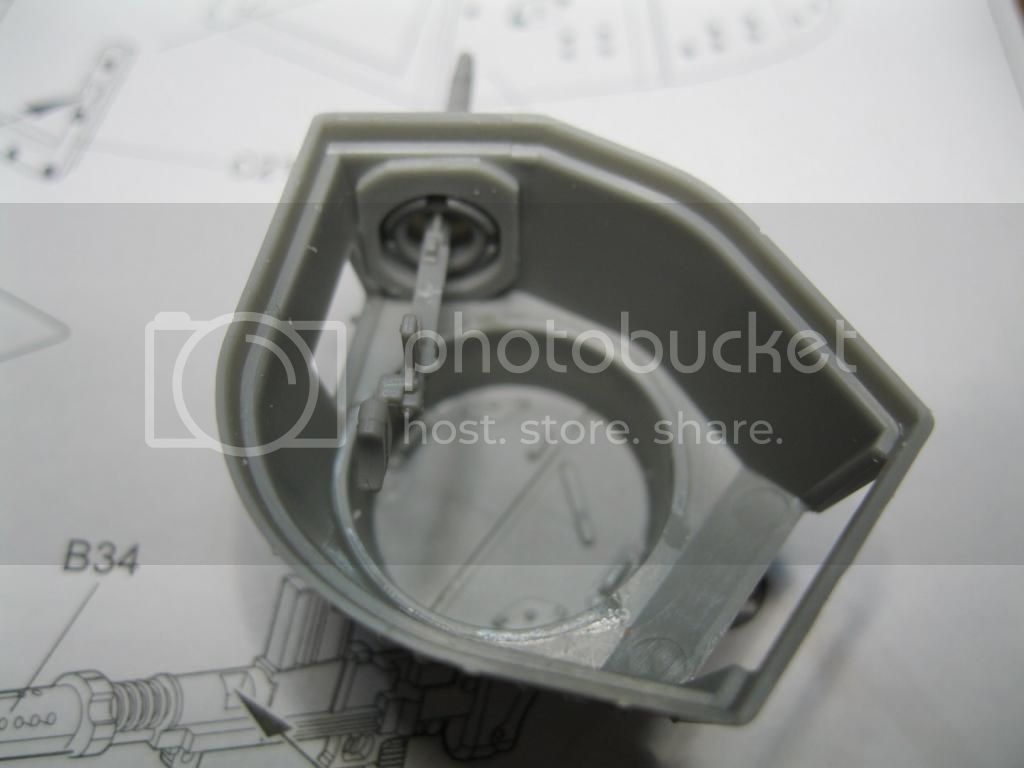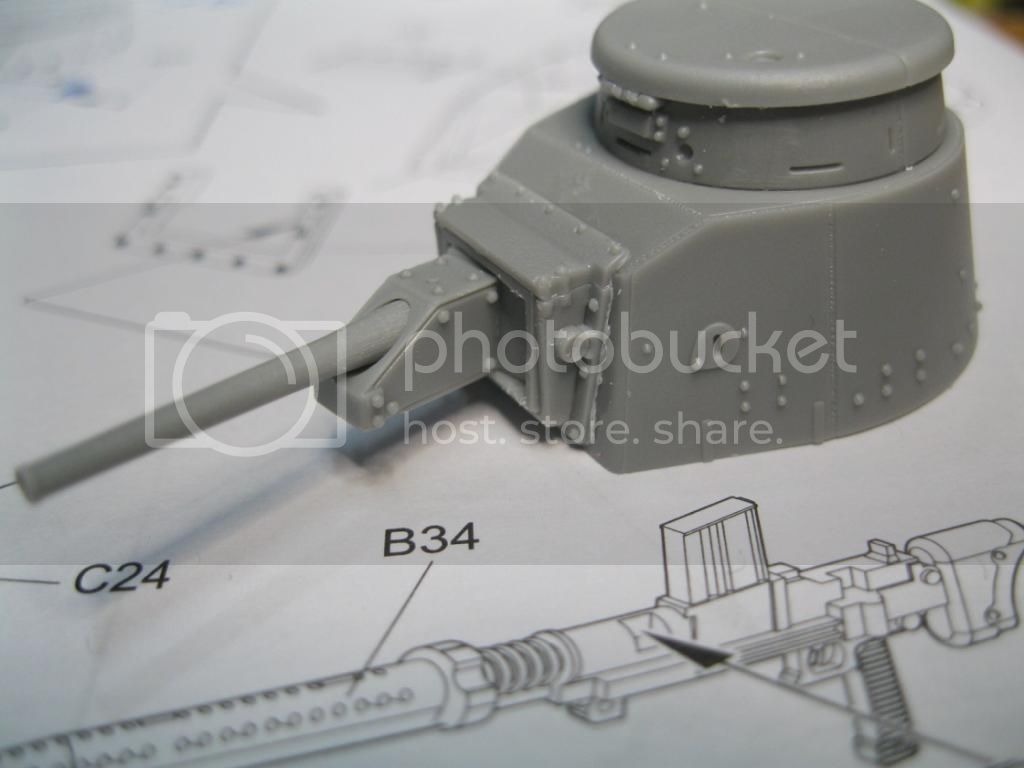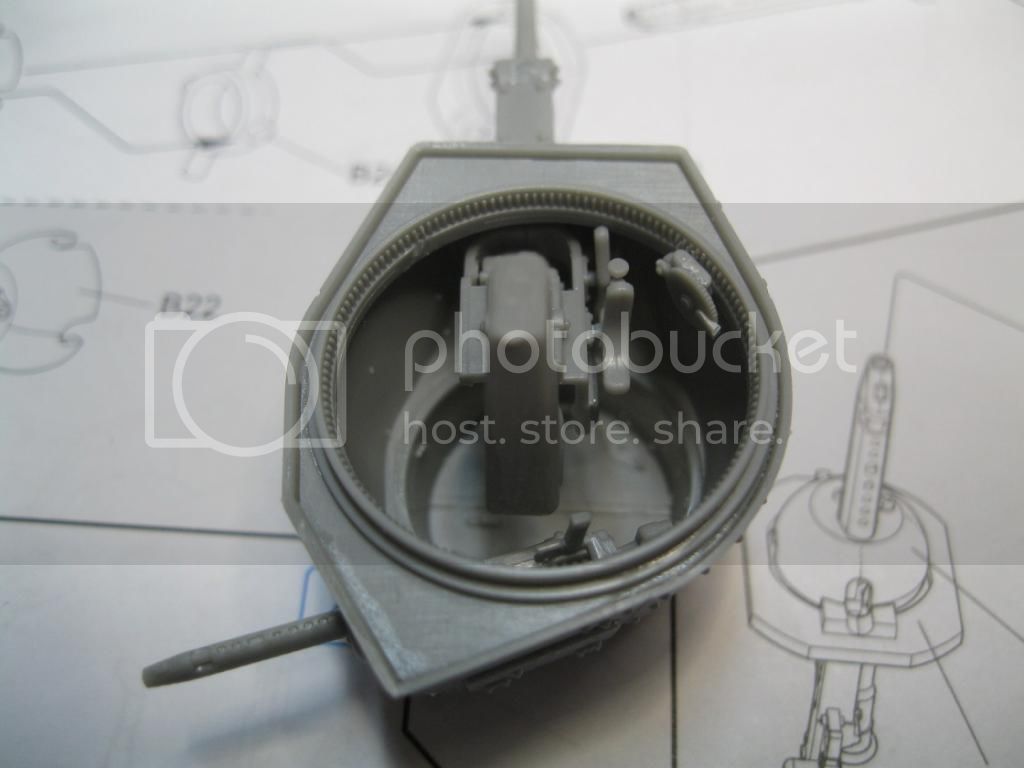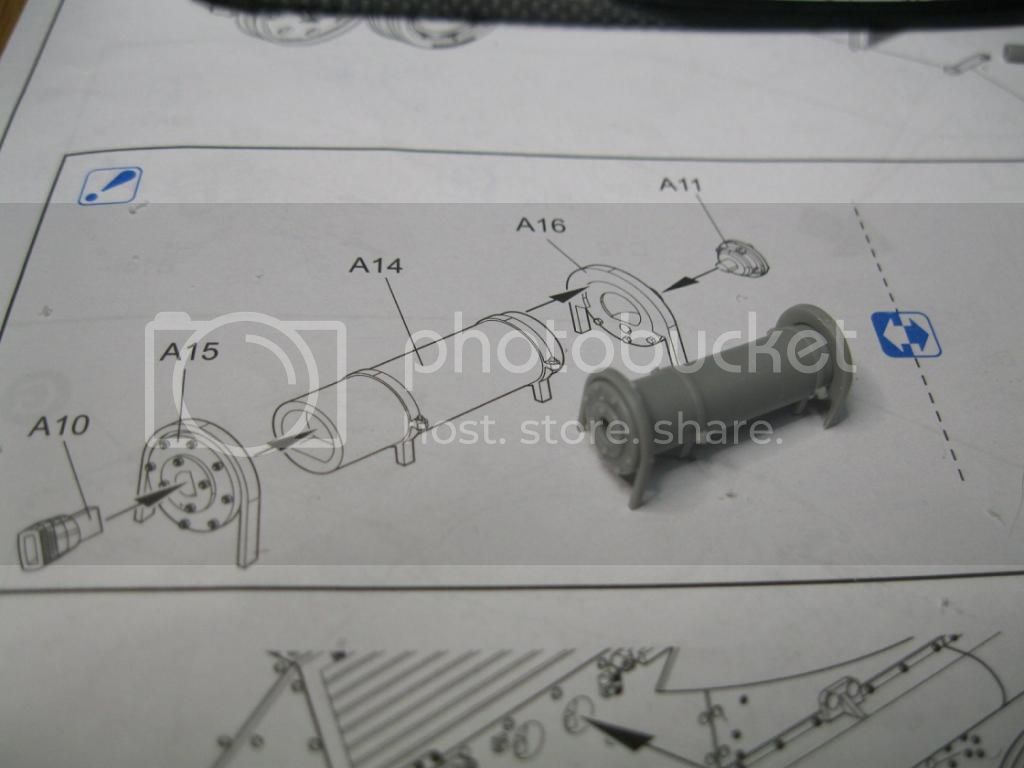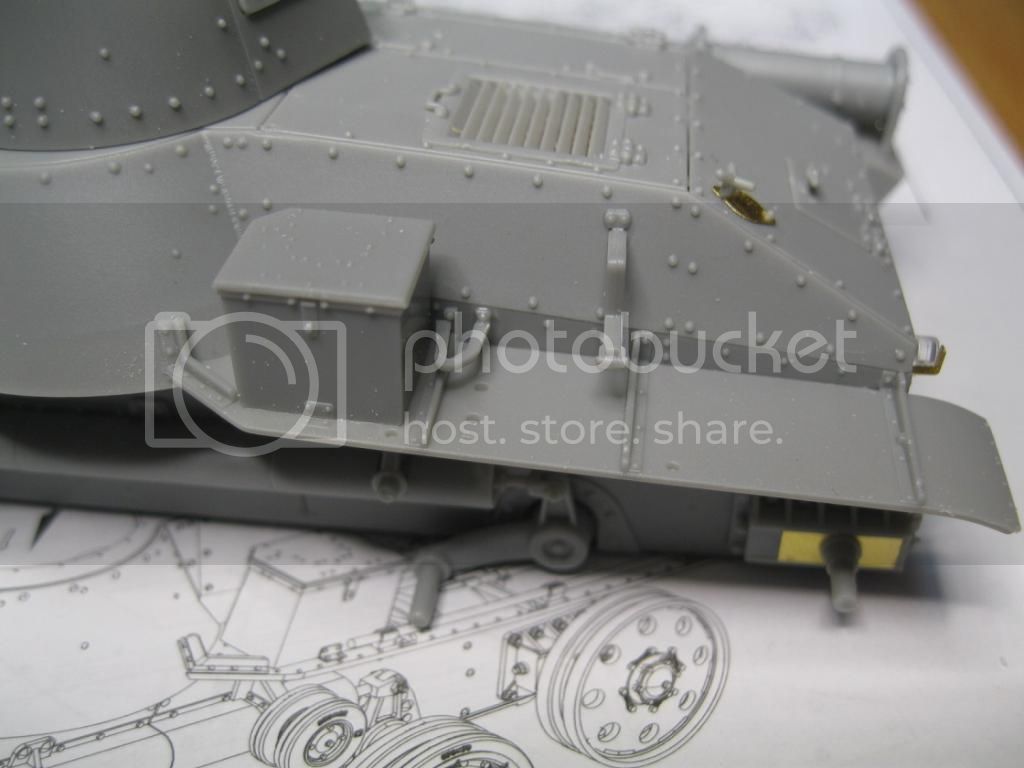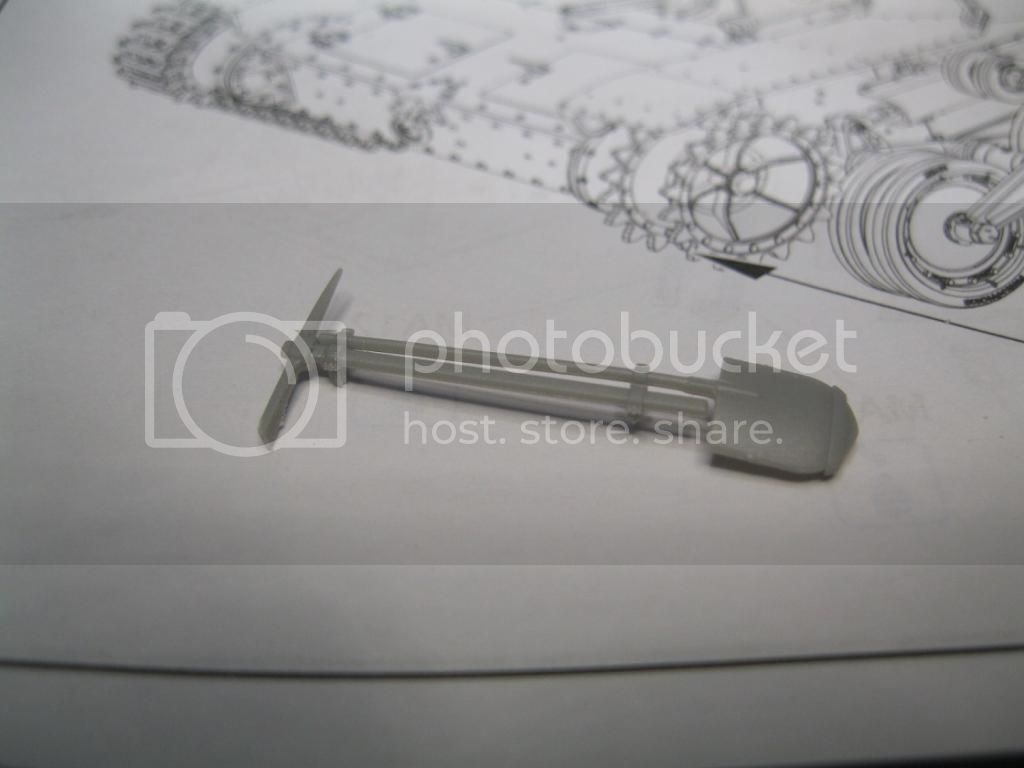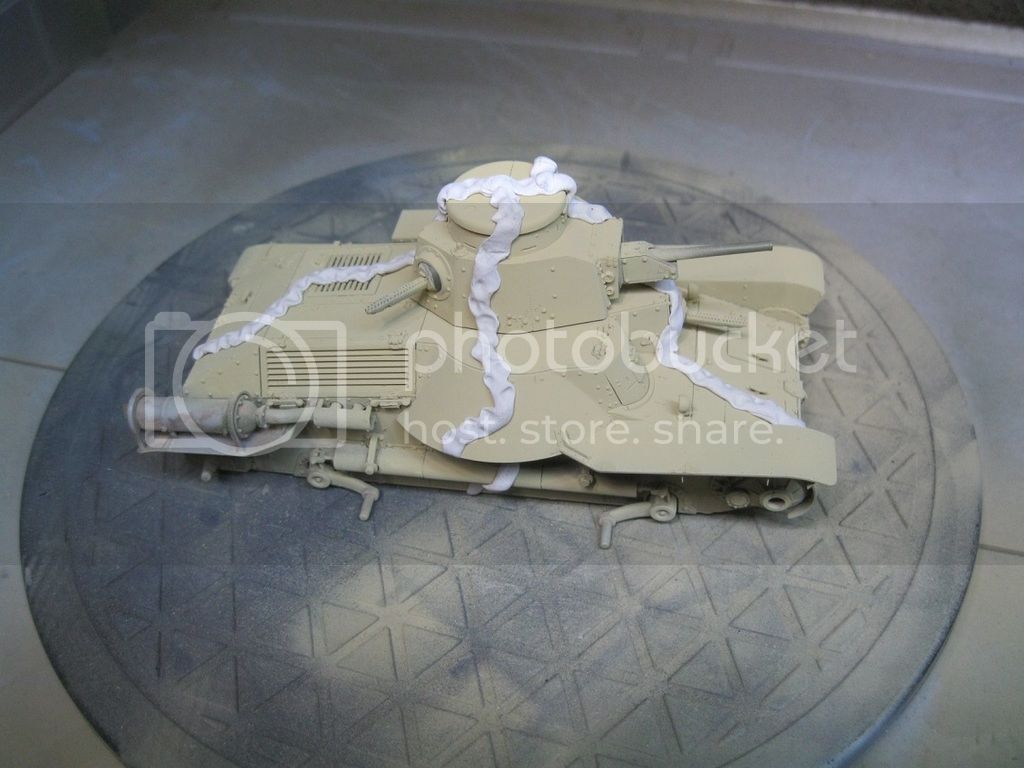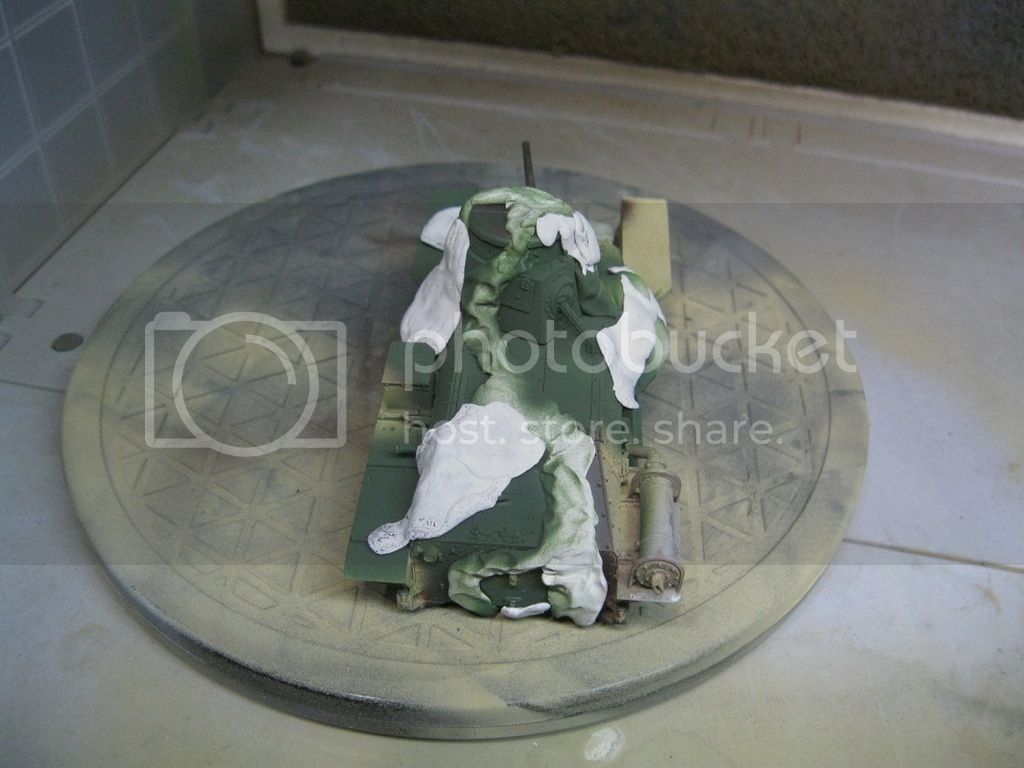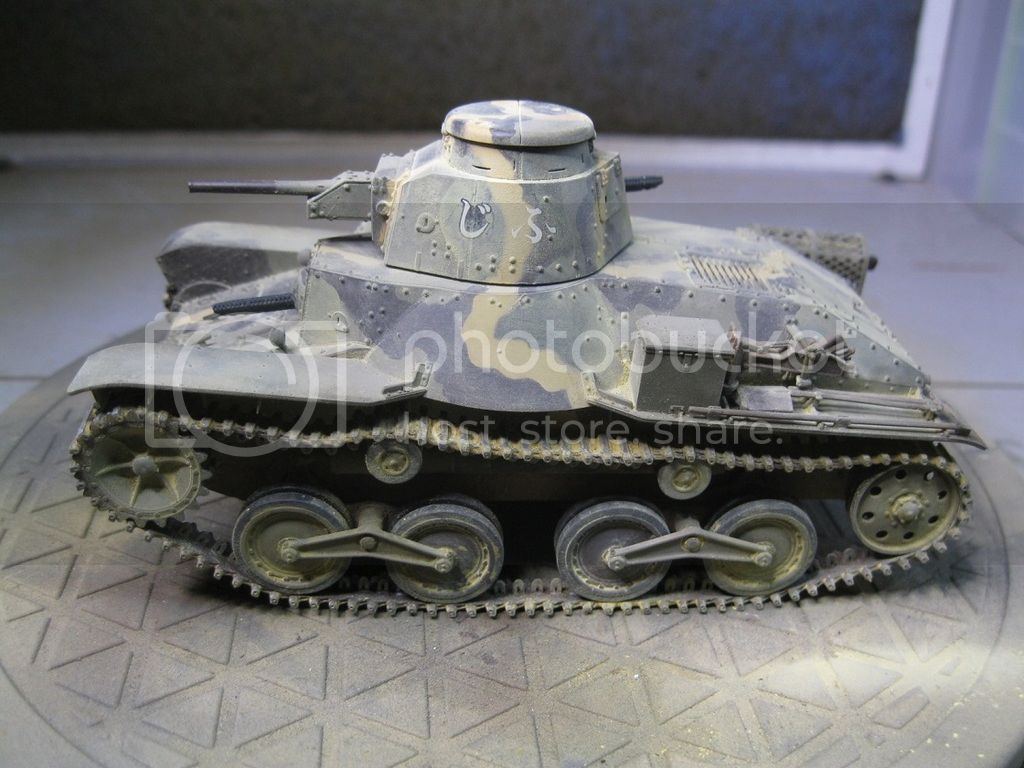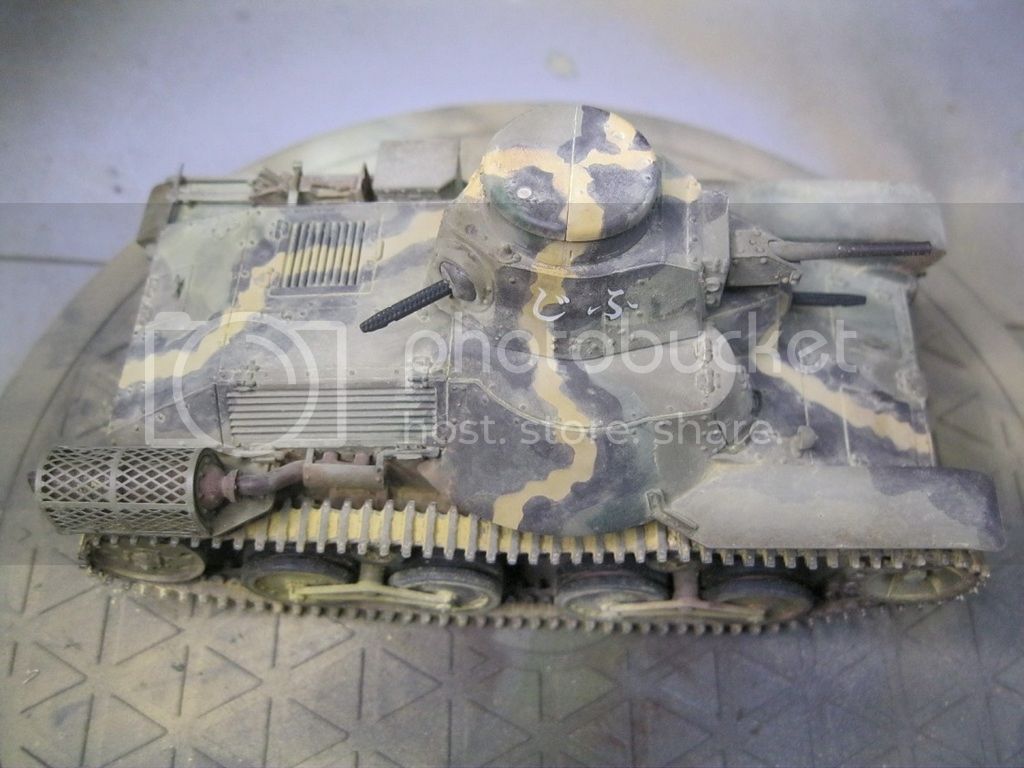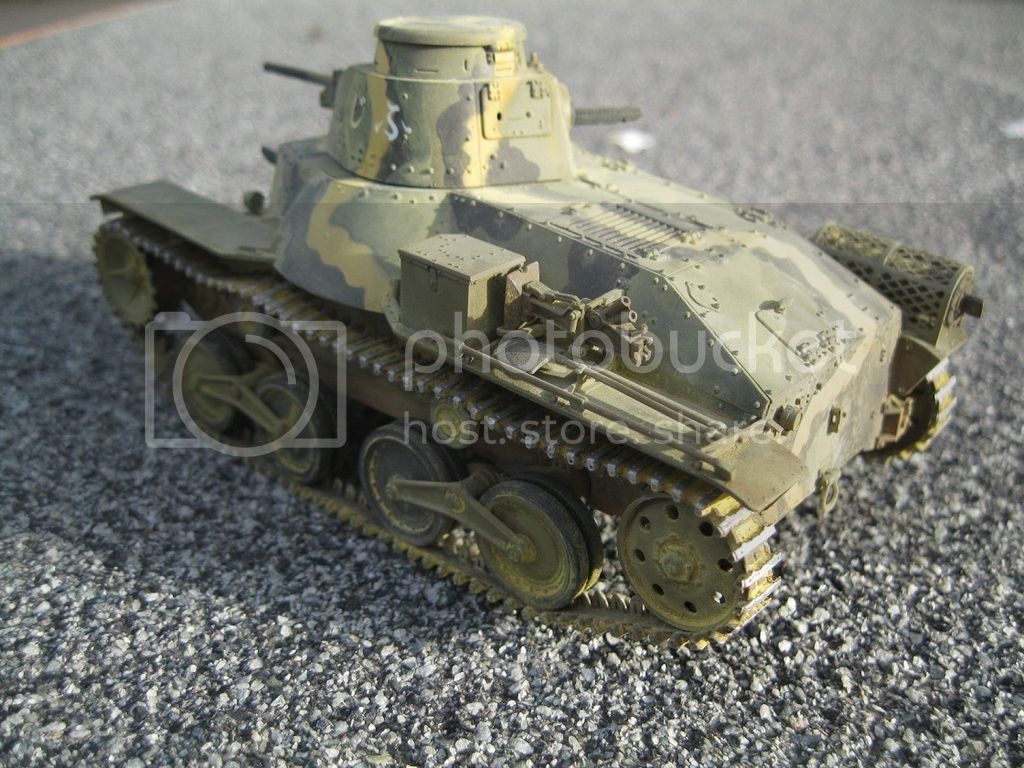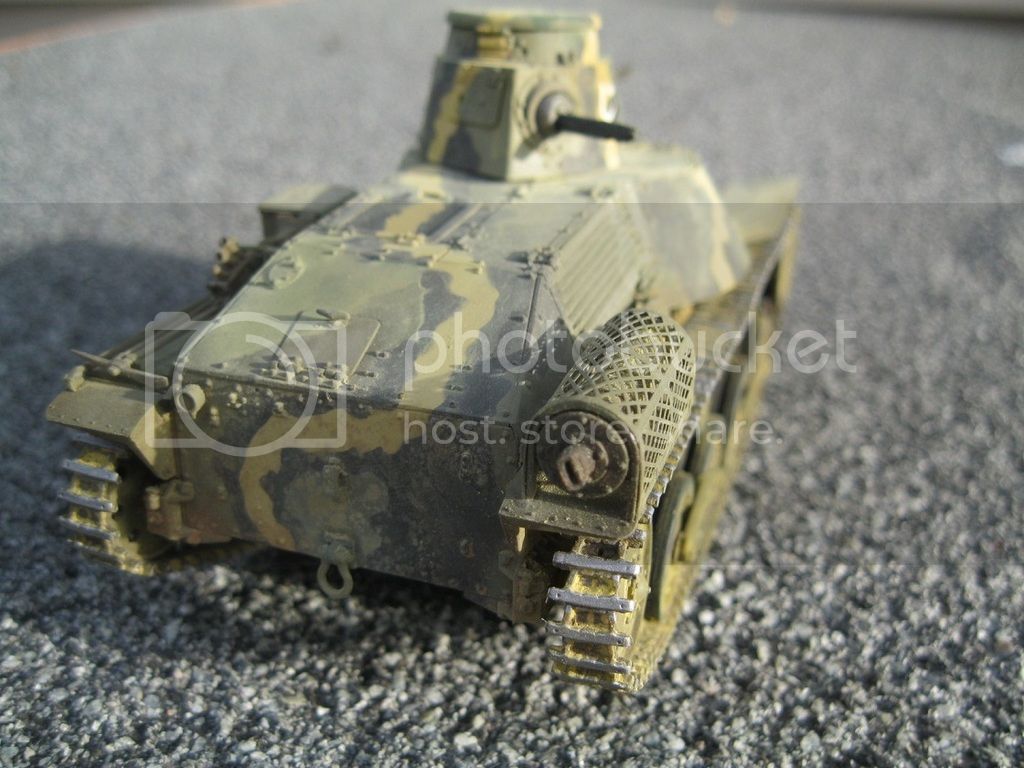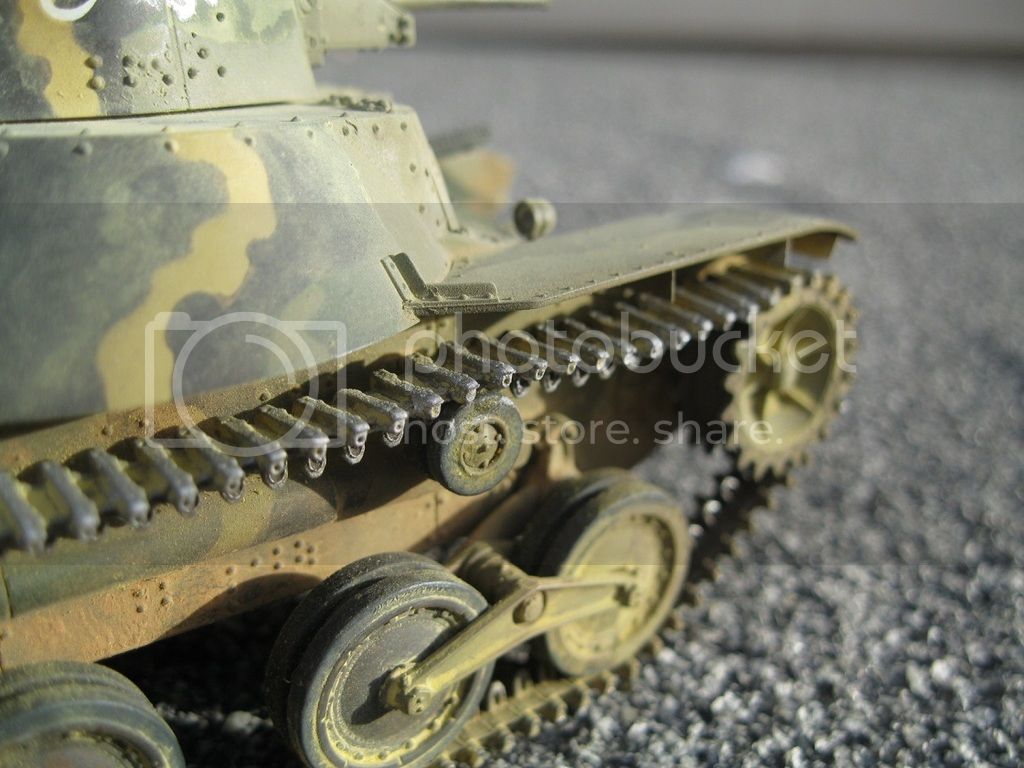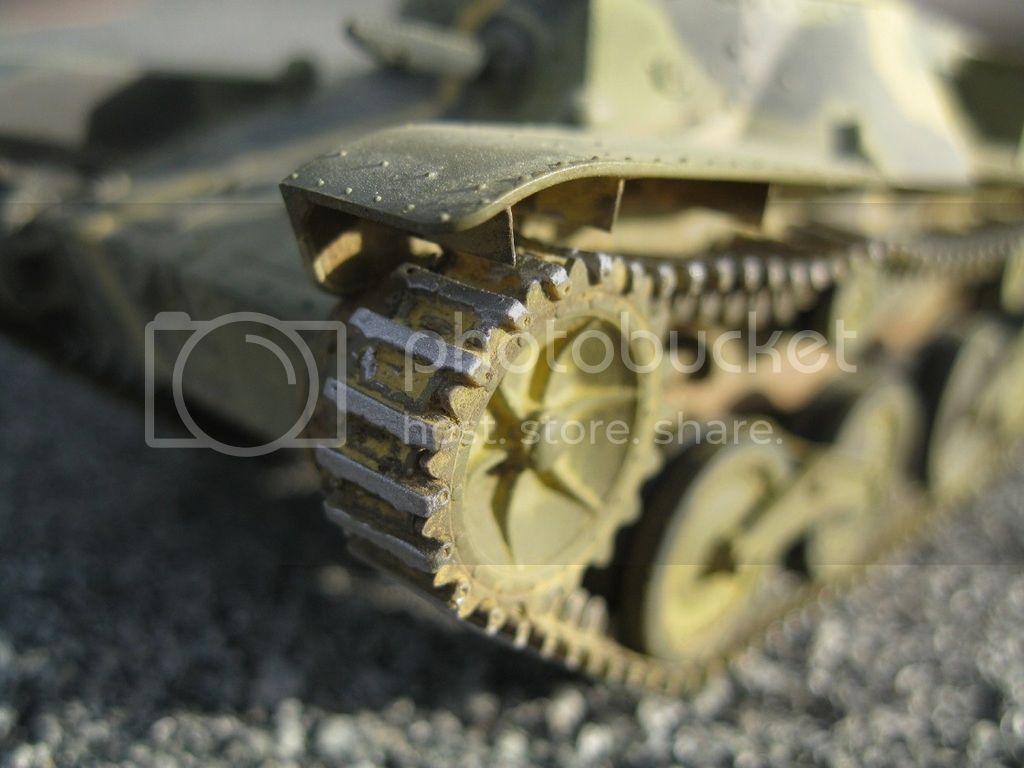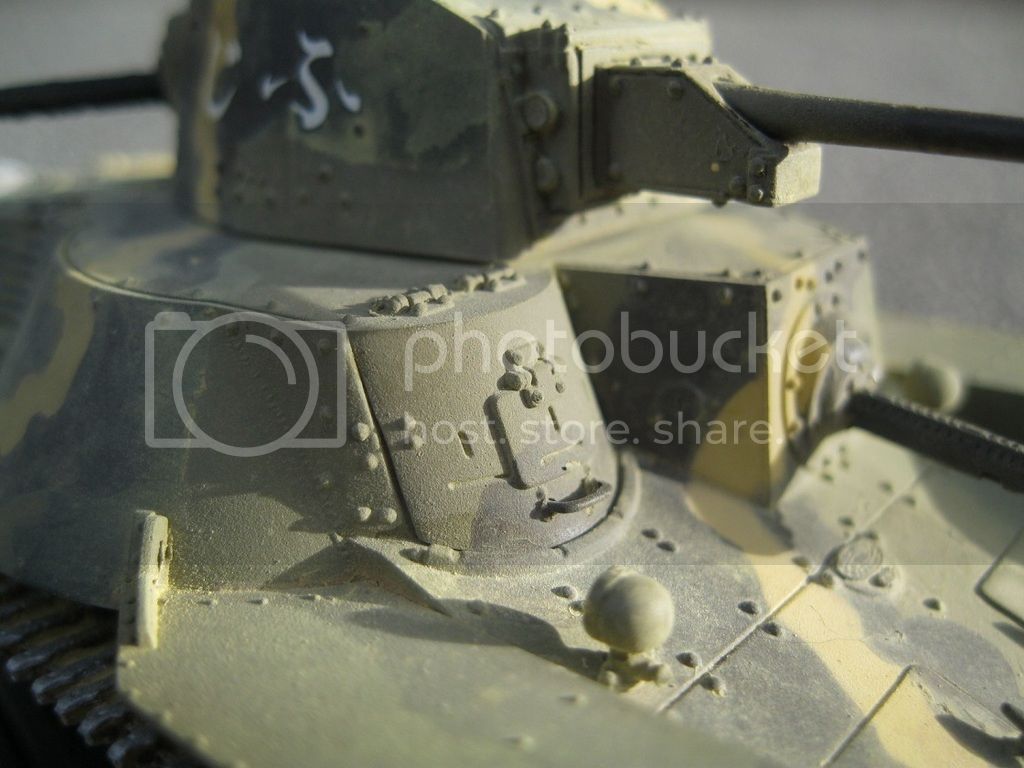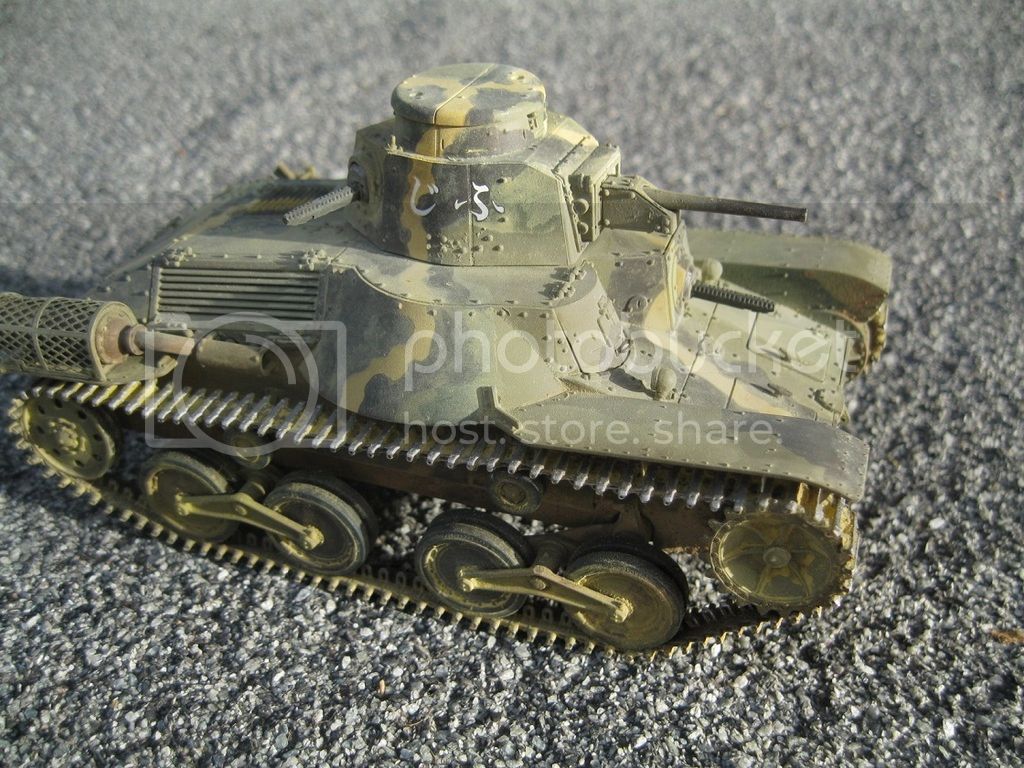I did some more research on the battle at the Peleliu airfield. There are a few photos of destroyed tanks available, some fairly good for detail. This account from the official USMC monograph of the battle has some interesting details. Scroll down about half way, to page 51 for the tank attack. http://www.ibiblio.org/hyperwar/USMC/USMC-M-Peleliu/USMC-M-Peleliu-3.html In particular, this paragraph:
"Exactly who knocked out what--and where and when--is another matter shrouded in mystery. If two of the enemy tanks escaped, as reported,61 that would mean that only 11 (or 17, depending on conflicting reports) were destroyed. Yet one officer with a flair for figures calculated later that if every individual claim of a tank knocked out were to be accepted at face value, there would have had to be 179˝ of them. The fact appears to be that every tank was hit so many times by so many different weapons that in all probability no single hit could be held responsible for its destruction"
This would explain why the tanks were so badly shot up.
I have thought about trying to model this tank as it was before it was destroyed.
http://www.ibiblio.org/hyperwar/USMC/USMC-M-Peleliu/img/USMC-M-Peleliu-p52.jpg
I want to try to replicate the framework tied to the back that the infantry would have held on to. My guess is that it is made from bamboo, but if anyone knows better I would appreciate the information.
To start with the build, I followed the instructions for the most part, with only a few minor changes where it made construction easier. First up is the assembly of the road wheels, return rollers and drive sprocket. I ran both sides of part B21, the spacer that fits between the road wheels, over some sand paper to help thin it down so that the photo-etch spacers would fit better.
